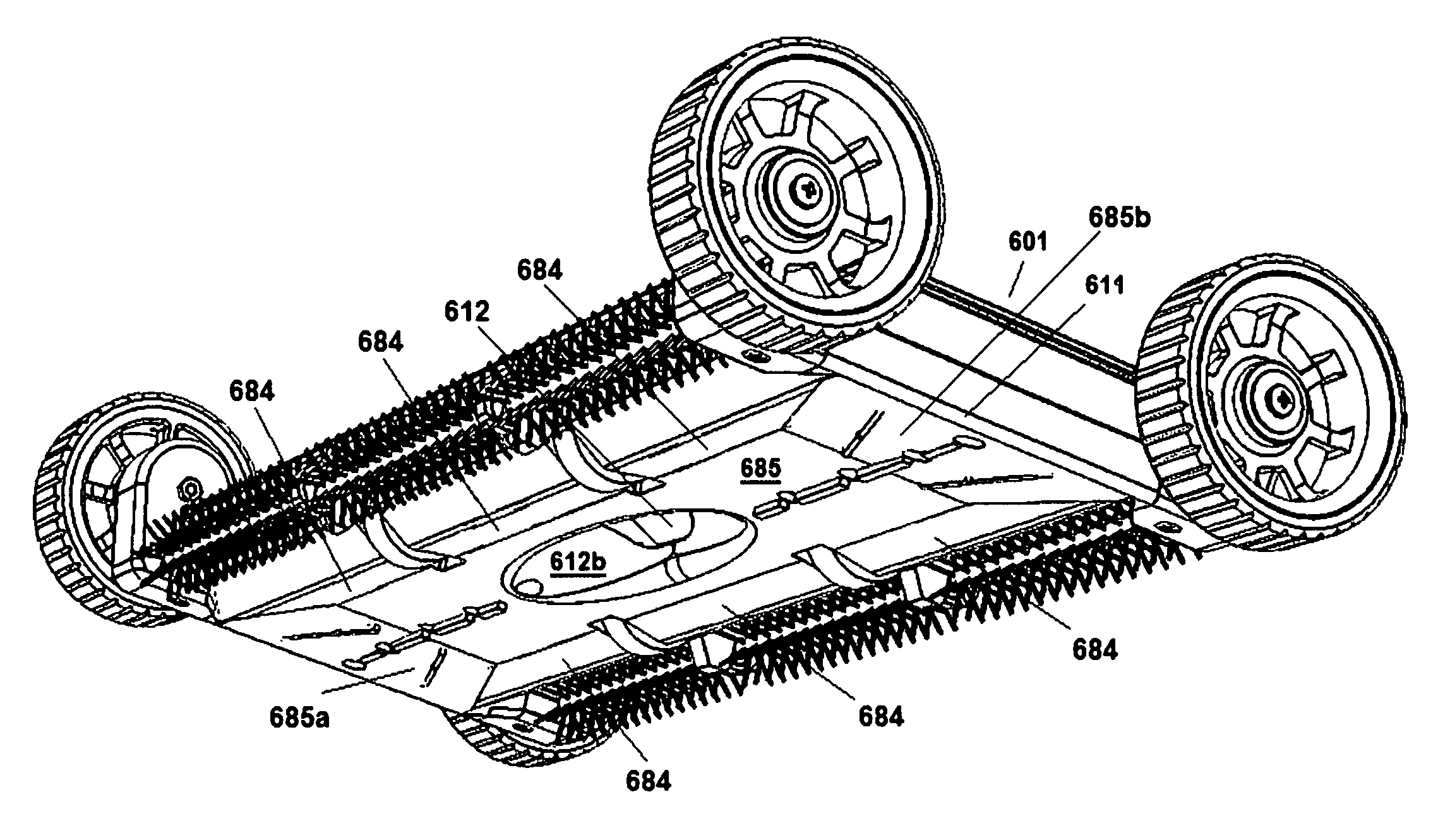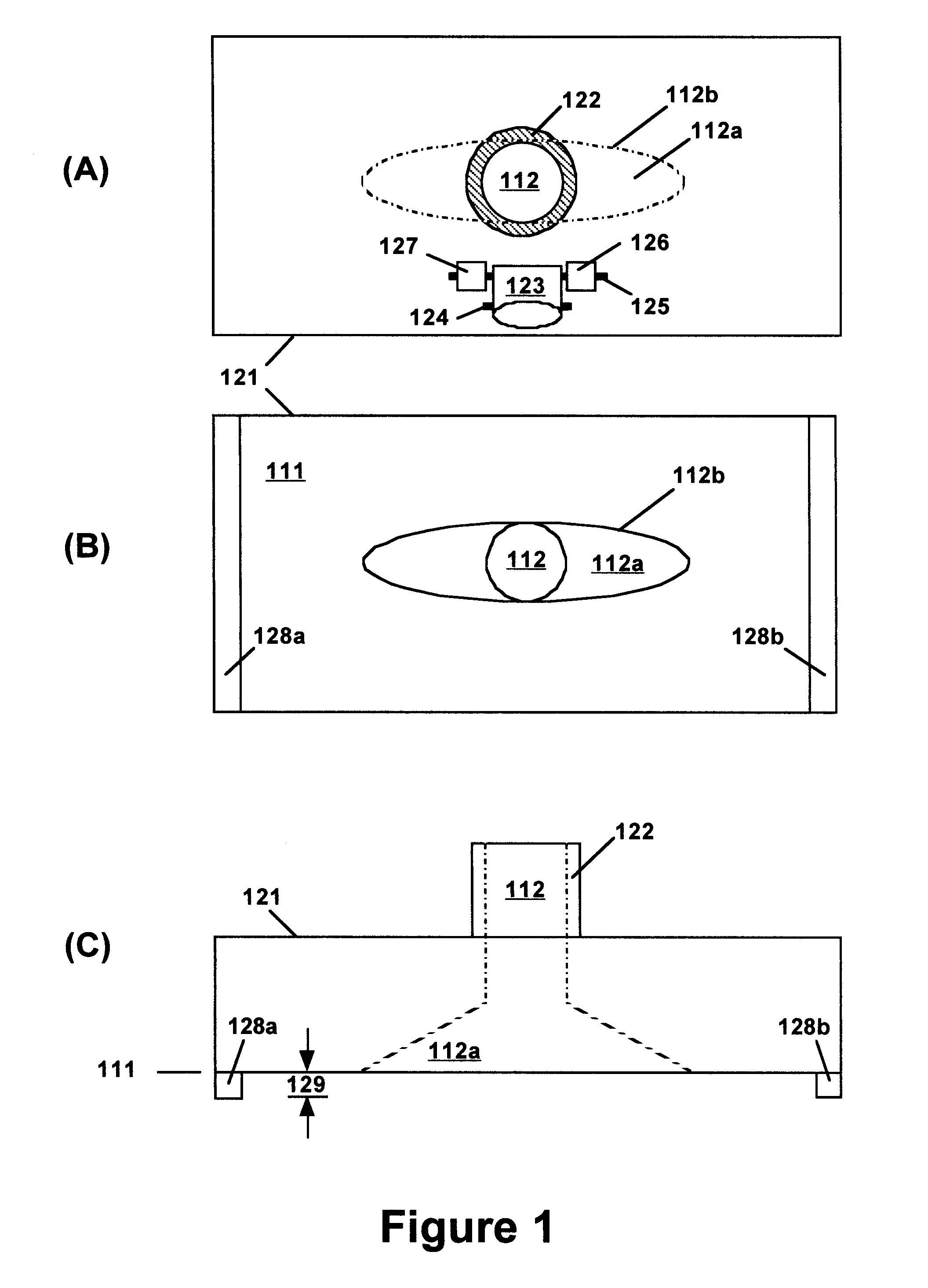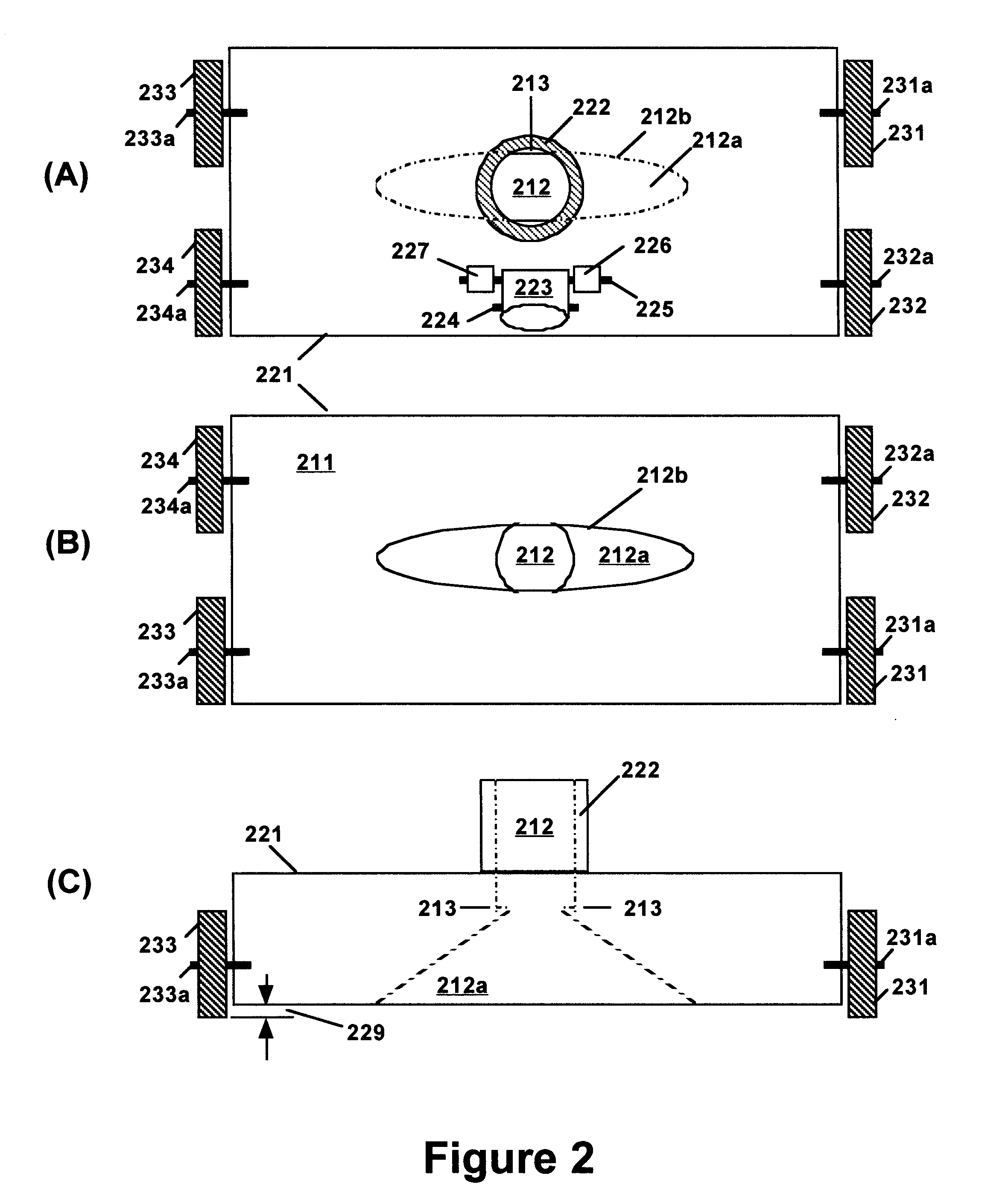Pool cleaning device with improved bottom topography
a cleaning device and bottom topography technology, applied in the direction of gyms, buildings, buildings, etc., can solve the problems of ineffective removal of debris bits by prior art devices, difficult to capture tree leaves, and inability to efficiently capture debris larger than the bottom gap of the device, so as to facilitate smooth water flow, improve the capture of tree leaves and other debris, and improve the effect of water flow uniformity
- Summary
- Abstract
- Description
- Claims
- Application Information
AI Technical Summary
Benefits of technology
Problems solved by technology
Method used
Image
Examples
Embodiment Construction
[0025]Terminology used in this document is generally known to those skilled in the art. The term “rectangular housing” denotes the overall shape of the housing rather than a rigid mathematical geometry. The generic term “pool” encompasses both swimming pools and spas. The terms “hemielliptically-beveled” and “hemiellipsoidal” are equivalent and denote the overall shape of the beveled suction hole inlet rather than a rigid mathematical geometry. The term “housing bottom planar area” also applies to the same area when the housing bottom is curved so as to conform to the curvature of the swimming pool bottom. The term “debris” denotes any small object that may need to be removed from a swimming pool, tree leaves, bits of paper, and candy wrappers, for example.
[0026]The term “rotatably attached” when applied to a wheel, gear or pulley having an axle denotes that the wheel, gear or pulley may rotate about the axle or that the axle may rotate, or both. Axles employed in the pool cleaning ...
PUM
 Login to View More
Login to View More Abstract
Description
Claims
Application Information
 Login to View More
Login to View More - R&D
- Intellectual Property
- Life Sciences
- Materials
- Tech Scout
- Unparalleled Data Quality
- Higher Quality Content
- 60% Fewer Hallucinations
Browse by: Latest US Patents, China's latest patents, Technical Efficacy Thesaurus, Application Domain, Technology Topic, Popular Technical Reports.
© 2025 PatSnap. All rights reserved.Legal|Privacy policy|Modern Slavery Act Transparency Statement|Sitemap|About US| Contact US: help@patsnap.com



